- Home
- Antonia Fraser
Marie Antoinette Page 23
Marie Antoinette Read online
Page 23
CHAPTER TWELVE
FULFILLING THEIR WISHES
“Madame, you have fulfilled our wishes and those of France . . .”
LOUIS XVI TO MARIE ANTOINETTE, 1781
In the spring of 1780 a prolonged visit from those friends of Marie Antoinette’s youth, the Hesse Princesses, enabled the Queen to demonstrate in eloquent fashion the style that she was beginning to develop in her own private life. For like the rest of Europe, royalties not excepted, Marie Antoinette had a growing belief in the right to some kind of personal privacy. The contrast between the magnificent state rooms and the network of poky little cabinets or private rooms behind them (which is so striking to the modern visitor to Versailles) represented a chasm between two worlds.
Of course the older generation in France resented such changes as older generations tend to do. Even such obviously appropriate modernizations as allowing men and women to eat together, and the Queen being present at the King’s “little suppers,” which was instituted by Marie Antoinette in 1774 at the suggestion of Count Mercy, had met with furious disapproval. Previously the Queen and the Princesses were forbidden to sit down with the non-royal males. Mercy made the excellent point that the loose morals of the court of Louis XV had been enhanced by this artificial segregation, which led directly to “licentious” social occasions presided over by the Comtesse Du Barry.1
The senior women at the French court, according to the memoirs of the Vicomtesse de Fausselandry, had always found it difficult to pardon the Queen for her beauty and her “sweet familiarity.” Her friendship with the kind of young people who shared her own predilection for an escape from court traditions provided further ammunition; in revenge they called her proud, when the reverse was the truth. Yet it is important to note that Marie Antoinette’s instinct towards a simpler and more private way of life was actually welcome to the monarch himself. As Louis XVI would confide to one of his servants much later, “These manners, new at Court, were too suitable to my own taste to be opposed by me.”2
The pleasures of this privacy included the enjoyment of her burgeoning gardens, the introduction of private theatricals and wherever possible the adoption of much plainer clothes in place of the rigid court dress, with its stiff structures of panniers and train. For it was at about this time that Marie Antoinette, abandoning heavy traditional make-up, began to wear her classic white muslin gowns. These consisted of a plain piece of material put over the head, with a drawstring neck. A few ruffles and ribbons were added, and it was tied at the waist by a silk sash, pale blue or striped. With a straw hat to complete it, this was the costume of Marie Antoinette immortalized in 1783 by the brush of Madame Vigée Le Brun. The following year, when Mrs. Cradock, wife of a wealthy Englishman, was shown the Queen’s Robes of State, it was as though she was inspecting museum pieces. In a sense, that was true, even if those concoctions of rose satin and blue velvet, heavily embroidered with pearls and other jewels, garnished with lace and gold and silver tissue, were still let out of the museum from time to time.3
The Wardrobe Book of the Queen was presented to her daily by her Mistress of the Robes together with a pincushion; Marie Antoinette would prick the book with a pin to indicate her choices. The porters attached to the Queen’s Wardrobe (this was three large rooms filled with closets, drawers and tables) then carried in the huge baskets covered in cloths of green taffeta. The Wardrobe Book of 1782, in the care of the Comtesse d’Ossun, survives. Each outfit is categorized and accompanied by a tiny swatch of material. There are samples for the court dresses in various shades of pink, in shadowy grey-striped tissue and in the self-striped turquoise velvet intended for Easter.
But what is notable is the preponderance of swatches for the more casual clothes, the loose Lévites shown together on one page in an array of colours, from pale grey and pale blue through to the much darker shades of maroon and navy, sometimes with small sprigs embroidered between the stripes. There are redingotes (from the English word riding-coat) in the same palette of blues, as well as a particular mauve marked Bertin-Normand, coupling together the names of the couturier and the silk-merchant. Swatches for the so-called “Turkish” robes are shown in self-striped pink and very dark mauve, for the robes anglaises in turquoise and self-striped mauve as well as dark maroon striped in pale blue. One swatch of material, supplied by the other celebrated silk-merchant, Barbier, uses the Queen’s favourite cornflower to good effect, set in a design of wavy, cream-coloured stripes.*484
The muslin dresses added simplicity of material to that of shape. Originally imported to France by the Creole ladies of the West Indies, her muslin dresses suited Marie Antoinette’s romantic idea of a simplified life to the extent that she came to present them to her English friends, such as the Duchess of Devonshire, as a token of esteem.5 Although the Queen of France was denounced by the French silk industry by failing in her duty to them, it has to be said that, once again, Marie Antoinette was not so much innovating fashion as flowing instinctively with it. All over Europe costumes were becoming simplified (as were hairstyles) as if in response to some shared Zeitgeist. In Vienna the Emperor Joseph even tried to ban the cumbersome panniers and expensive paraphernalia of official court dress. Although he did not succeed, the liberating intention was much like that of his sister in France. Similarly Marie Antoinette’s permission for gentlemen to wear frockcoats (le frac) in her private company might be denounced by conservatives. Twenty years ago, fulminated the Marquis de Bombelles, gentlemen wearing such a costume would not even have dared present themselves to the wife of a notary! Nevertheless it was the way the world was going.6
It was the same instinct that led Marie Antoinette, with a bevy of courtiers (but not the King), to visit the tomb of Rousseau. All present admired the simple good taste of the tomb, the soft romantic melancholy of the site, without, in the opinion of the sardonic Baron Grimm, having any thought to the memory of the man. And yet all of them, including Marie Antoinette, were being influenced by the man’s ideas. . . . Sensibility, even excessive sensibility, was much admired; appreciation of Gluck was another mark of it. When Iphigénie en Tauride was first performed, many people, anxious not to be thought coarse-grained, took the precaution of weeping the whole way through the opera.7
For their taste of the Queen’s new style, the Hesse Princesses came in a large family party, their visit being connected to a lawsuit in Paris. There was the unmarried Princess Charlotte, Marie Antoinette’s special friend: “All your family can be quite sure of my affection, but as for you, my dear Princess, I can’t convey to you the depth of my feeling for you.” Then there was the nineteen-year-old Princess Louise, with her husband (also her cousin) Prince Louis, who was heir to the Landgrave of Hesse-Darmstadt, and his younger brother Prince Frederick. Unlike Marie Antoinette, Louise was pregnant—she would give birth at the end of August—and a great deal of concern on the subject of her health was displayed by the Queen throughout her visit; this vicarious solicitude made up for the continued blighting of her own hopes in this direction, despite courses of iron pills.8
The father of the Princesses, Prince George William, although badly afflicted with gout and failing eyesight, was also in Paris for the sake of the family lawsuit, together with his wife, another unmarried daughter Princess Augusta and his son Prince George Charles. The latter, as a foreign prince in his mid-twenties, was someone whose interests Marie Antoinette could try to promote, in the patroness’s role that she enjoyed. The Landgrave of Hesse-Homburg and his wife the Landgravine Caroline, herself the sister of Princes Louis and Frederick, completed this interwoven family group, which brought with it memories of another time and a shared past.
Immediately the Queen sought to involve her friends in her favourite pursuits. On the evening of her arrival, Marie Antoinette’s “dear Princess” Charlotte was bidden to the Queen’s own box at Versailles for a theatrical performance. To re-establish their friendship, Charlotte and her family were to be sure to arrive an hour or so in advance. Such an invitati
on was a sign of great favour since the Queen’s box was extremely small. Huge panniered skirts would obviously be a disaster, so Marie Antoinette added the important words to her handwritten note: “I beg you all not to be too dressed up.” On 2 March an invitation to a ball given by the Comtesse Diane de Polignac, sister of Comte Jules and Mistress of the Household to Madame Elisabeth, was accompanied by a similar instruction regarding informality. Since this was to be a ball “without ceremony,” beginning at 11:30 p.m., the Princesses should wear “little” dresses or polonaises, robes where the light silk overskirts were conveniently looped up instead of grandly sweeping the floor.9
An invitation came to Princess Louise, her husband and brother-in-law from Marie Antoinette to see the garden at the Petit Trianon: “It’s looking so beautiful that I should be charmed to show it to you.” There was the provision: “I shall be quite alone so don’t dress up; country clothes and the men in frockcoats.” Midday was the best time to see the garden and lunch would be offered. A note to Princess Charlotte with arrangements for picking her up in order to go for a walk in the forest (at Marly or Saint-Germain) warned once again: “Don’t be dressed up and don’t wear big hats, because the carriage is only a barouche.”10
The Queen took a keen personal interest in the transformation of her gardens at the Petit Trianon. A series of little models made by the sculptor Deschamps were produced for her inspection. Trees and grass were represented by wood or moss or scrapings of horn dyed green; columns of the sort that were to feature in this romantic landscape, devised in part by the painter Hubert Robert, were modelled in wax. Fourteen models had to be produced before the Queen was satisfied. At Choisy, Marie Antoinette indulged her “real passion” for flowers; she particularly enjoyed painting the rose-modèles who posed for her, as it were, along a great white trellis nine feet long, where all her favourite species were grown. Appropriately enough, the young Pierre Joseph Redouté, who shared her love of roses, would be appointed her official draughtsman in 1787. Hyacinths—with blue the favourite colour—tulips and irises were among those flowers she favoured, not only in her gardens but as a theme of decoration for her various boudoirs. One of her ladies had special responsibility for seeing that everywhere in her apartments huge Chinese pots and small vases of crystal, Sèvres or Venetian glass were filled with flowers. Then there was her love of wild flowers such as violets and the flowery essences that were replacing the heavier musky perfumes, now thought to be old-fashioned.11
The theatre, including opera and the ballet, had long been an obsession; Madame Campan reported how Marie Antoinette was always eager to hear news of the latest plays and performances while at her toilette. In Paris, of course, she had her boxes at the Opéra, the Comédie Française and the Comédie Italienne (later the Opéra Comique), whose retiring rooms included dressing-tables. Ballerinas such as the exquisite Madeleine Guimard, perennially youthful and so thin that she was known as “the skeleton of the Graces,” fell under her patronage.12
But amateur theatricals were also part of eighteenth-century court tradition, the Pompadour, for example, having a great taste for them, whilst in Paris well over a hundred private theatres flourished. In the summer of 1780 Marie Antoinette graduated from minor performances in her own apartments, where she had been coached by her erudite Librarian, Monsieur Campan, to something more ambitious. On 1 June a new theatre was inaugurated at Versailles adjacent to the Petit Trianon. Designed by Richard Mique, its decor was blue and gold, with blue velvet and blue moiré, and papier-mâché to simulate marble.*49 Active participation in the theatricals was a great favour, and even an invitation to watch was a sign of approval. Aristocrats who were kept out were indignant when it was a nobody, the Librarian Campan, who acted as director and prompter, rather than some more suitable Duc. The celebrated theatrical companies came down from Paris to perform, but on 1 August some “little trifles,” to use Count Mercy’s careful phrase to Maria Teresa, were given by the courtiers themselves and their mistress.13
Mercy’s tact in breaking the news to the Empress was part of his general policy where any new pastimes of Marie Antoinette were concerned. In fact, in this case her reaction was hardly relevant since the King himself thoroughly enjoyed his wife’s performance on the stage. With the Princes and Princesses of the Blood, Louis XVI watched enchanted, unaccompanied by any great train of courtiers, and with only the body of ordinary domestic servants present who were performing their usual duties. Furthermore, as Mercy himself commented, the passion for theatricals now took over from the passion for gambling at late-night card parties, and it diverted the Queen from giddy expeditions to Paris. Expert tutors were imported: the actor Joseph Dazincourt from the Comédie Française for theatrical technique and Louis Michu from the Comédie Italienne as singing master.14
The amateur actors included the talented Comte d’Artois; Yolande de Polignac’s lover, the Comte de Vaudreuil (who was generally agreed to be the most skilful); another member of the Polignac set, the Comte d’Adhémar; and Yolande’s ravishing young daughter Aglä ié who, from her recent marriage to the Duc de Guiche, was nicknamed “Guichette.” Significantly, Marie Antoinette’s chosen parts had absolutely nothing to do with the gorgeously attired stately role she played day by day at Versailles. She played shepherdesses, village maidens and chambermaids, just as Artois played gamekeepers and valets. Rousseau’s Le Devin du Village (The Village Soothsayer) ended with the village devin adjuring everyone to return to the countryside, away from the court; a happy dance round the maypole followed. Marie Antoinette played the faithful—but simple—Colette with Artois as her admirer Colin and Vaudreuil as the eponymous soothsayer.
In the summer of 1780 Marie Antoinette needed distraction, and not only from gambling sessions and late-night trips to Paris; she had also lost a member of her circle for whom she had an acknowledged penchant. This was Count Axel Fersen. He succeeded at last in leaving for the American war as ADC to the French General Rochambeau on 23 March, having been kicking his heels since the previous autumn when a Franco-Spanish invasion plan in which he hoped to take part was aborted. Where this particular phase of the relationship between Marie Antoinette and Fersen is concerned—the first real phase—it is as ever important to beware of hindsight. The Swedish ambassador, in a report to his king of April 1779, wrote of the Queen’s “leaning” towards Fersen: “I confess that I cannot help believing it . . . I have seen signs too unmistakable to doubt it.” She had regarded him so “favourably” that this had given offence to several people.15
A weakness for a young and good-looking man is, however, a very different matter from an adulterous liaison, especially since the fondness concerned was expressed in the kind of patronage that would inevitably absent Fersen from her side, by going to America. At the age of twenty-five Fersen also had an agenda that was clear enough. Putting the needs of a military career first, he wanted to be part of the French support of independence in the New World.
Already, young French aristocrats, inspired by a mixture of idealism and ambition, were beginning to cross the Atlantic under their own impetus, despite the theoretical need for government permission. The rebels were beginning to capture the imagination: “Their cause was our cause. We were proud of their victories, wept for their defeats,” wrote one noblewoman. The young red-haired radical, the Marquis de La Fayette, backed by his colossal private wealth—a rumoured income of 100,000 livres a year—defiantly charted a boat and departed for the war. Another voyager was La Fayette’s brother-in-law, the Vicomte de Noailles, son of Marie Antoinette’s first Mistress of the Household (the two men were married to sisters, Noailles cousins). While some might have privately agreed with Yolande de Polignac’s verdict in a letter to an English friend—“This dreadful America, since it has been discovered, has produced nothing but evil!”—others including Fersen saw there the opportunity for glory and self-advancement.16
Fersen certainly placed the perceived need for action above his other need to marry an heiress, althou
gh even here he was prepared to contemplate the widowed daughter of the Baron de Breteuil as a possible bride. Apart from that, he was thoroughly beguiled by the Queen—particularly as she was so helpful. Fersen’s candid letters on the subject to his father in Sweden are the best possible proof of the lack of any deeper level to their relationship at this point. “She is a charming princess,” Fersen wrote in the same terms he had used two years previously, adding, “she has always treated me very kindly.” He also pointed to the influence of Breteuil, the French ambassador in Vienna who was currently visiting France: “Since the Baron spoke to her, she singles me out even more. She almost always walks with me at opera balls . . .” But it was his next comment that was the real clue to Marie Antoinette’s favour: “Her kindness has aroused the jealousy of the younger courtiers who cannot understand a foreigner being better treated than they are.”17 This, of course, was the whole point; Fersen, apart from his attractions, brought no baggage from the court of France, something that was fully understood by the Polignac set. The Polignacs were quite content that the Queen should have an admirer who wanted a commission for America rather than richer pickings in France itself.
In his concern to leave, did Fersen also feel that he was being sucked too far into the Queen’s circle—and the Queen’s affections? It is possible. Certainly Fersen wrote of his appointment to Rochambeau’s expedition, which he attributed finally to Vergennes’ feeling for the senior Count Fersen: “I am in a state of joy that cannot be expressed.”18 The Queen, on the other hand, was said to have wept when Fersen took his departure, having invited him to a series of her supper parties in the weeks before.

 Warrior Queens
Warrior Queens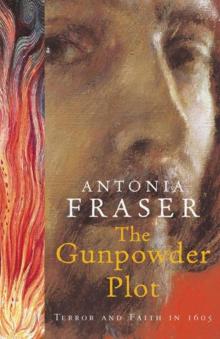 The Gunpowder Plot
The Gunpowder Plot Cromwell
Cromwell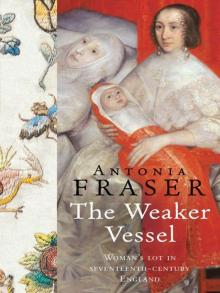 The Weaker Vessel: Women's Lot in Seventeenth-Century England
The Weaker Vessel: Women's Lot in Seventeenth-Century England Marie Antoinette: The Journey
Marie Antoinette: The Journey Oxford Blood
Oxford Blood Your Royal Hostage
Your Royal Hostage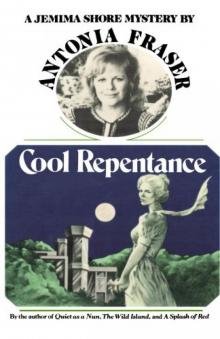 Cool Repentance
Cool Repentance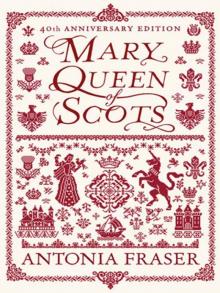 Mary Queen of Scots
Mary Queen of Scots Political Death
Political Death Royal Charles: Charles II and the Restoration
Royal Charles: Charles II and the Restoration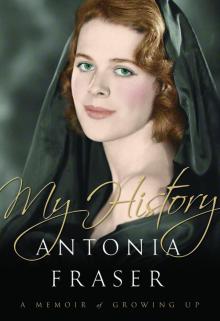 My History: A Memoir of Growing Up
My History: A Memoir of Growing Up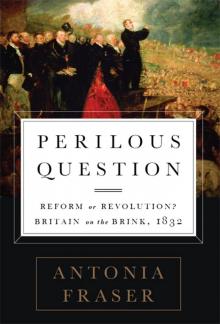 Perilous Question: Reform or Revolution? Britain on the Brink, 1832
Perilous Question: Reform or Revolution? Britain on the Brink, 1832 Jemima Shore at the Sunny Grave
Jemima Shore at the Sunny Grave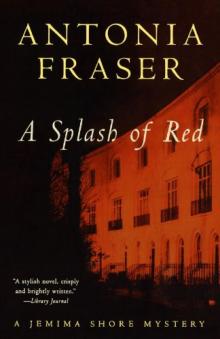 A Splash of Red
A Splash of Red Must You Go?: My Life With Harold Pinter
Must You Go?: My Life With Harold Pinter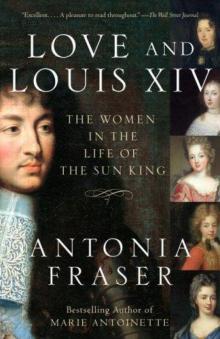 Love and Louis XIV: The Women in the Life of the Sun King
Love and Louis XIV: The Women in the Life of the Sun King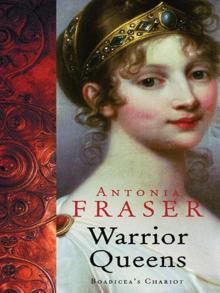 The Warrior Queens
The Warrior Queens The Wild Island
The Wild Island Quiet as a Nun
Quiet as a Nun Perilous Question
Perilous Question Cromwell, the Lord Protector
Cromwell, the Lord Protector Gunpowder Plots
Gunpowder Plots The Wild Island - Jemima Shore 02
The Wild Island - Jemima Shore 02 Gunpowder Plots: A Celebration of 400 Years of Bonfire Night
Gunpowder Plots: A Celebration of 400 Years of Bonfire Night Gunpowder Plots_A Celebration of 400 Years of Bonfire Night
Gunpowder Plots_A Celebration of 400 Years of Bonfire Night Marie Antoinette
Marie Antoinette Must You Go?
Must You Go?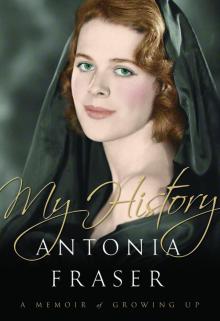 My History
My History